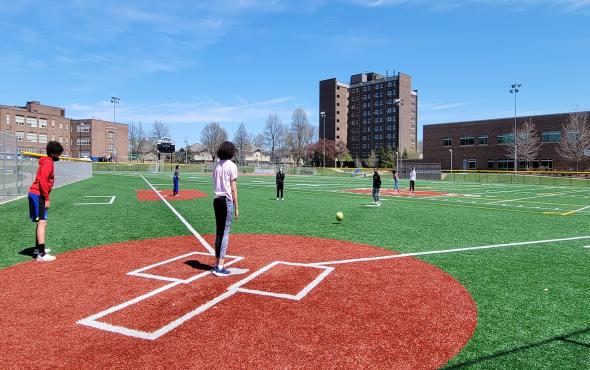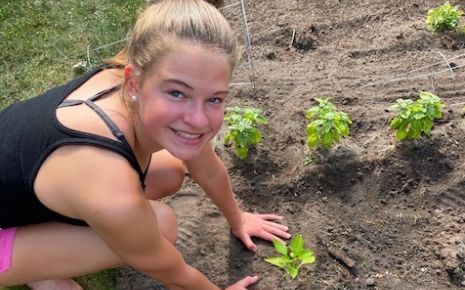COVID-19 left classrooms eerily empty as learning moved from in-person to online. Barriers that already existed for many students were magnified as Wi-Fi became the “must have” tool for learning and daily routines were turned upside down. Social isolation took a toll on young people’s mental health.
Undaunted, Neighborhood House stepped up to the challenge by turning one of their sites into an in-person Distance Learning center for St. Paul students.
“We started with just one participant,” noted Neighborhood House youth worker Amy Moua. “Then we got another, and another, and it expanded from there. We really relied on our school partners to help get the word out.”
“A lot of effort went into providing the structure of a classroom in a COVID-safe manner,” Amy continued. That meant each young person had their own six-foot table as a workspace. Small white boards made it possible for students to show their work while maintaining social distance. And noise-cancelling headphones were essential — with students from all different grade levels and schools, class times rarely aligned so keeping the din of multiple teachers in check was key!
Youth workers who typically facilitated afterschool activities became pseudo-teachers, guiding up to 10 students at a time through their school day and answering questions about lessons that ran the gamut from elementary math and reading to in-depth high school assignments. “It was challenging at times,” Amy admitted. “Sometimes we were learning the material right alongside the young people…and we used Google a lot!” she joked.
Comcast’s Lift Zone partnership ensured that students had a strong, stable internet connection. Youthprise provided snacks and meals. The Saint Paul & Minnesota Foundation provided some funding to support the effort.
With structure in place, young people were able to focus on their learning. “Several students came into the program with missing assignments,” Amy recalled. “While they were here, we were able to help them catch up on the work they were missing while also staying on top of their current assignments.
And while the focus was clearly academic, fun was part of the day too. “We had arts and craft time, and card games and board games were really popular,” Amy mused. “We built in time for physical activity, and even took short walking field trips to nearby parks.”
“I knew that we were really doing something right when young people started building relationships with each other outside of our program time,” Amy reflected. “That was just the best feeling to see that.”
In addition to boosting academic success, parents noticed positive impacts that carried over into their home lives. “This program was unbelievably helpful in our ability to get back to some type of routine that worked well for our family structure,” noted one parent. Others said the program “helped my child with social needs and gave purpose to their day” and “enabled my child to participate more fully in school.”
While most students have returned to their classrooms, the distance learning program continues at Neighborhood House. Nearly one-third of the original participants are currently finishing up the school year there.


